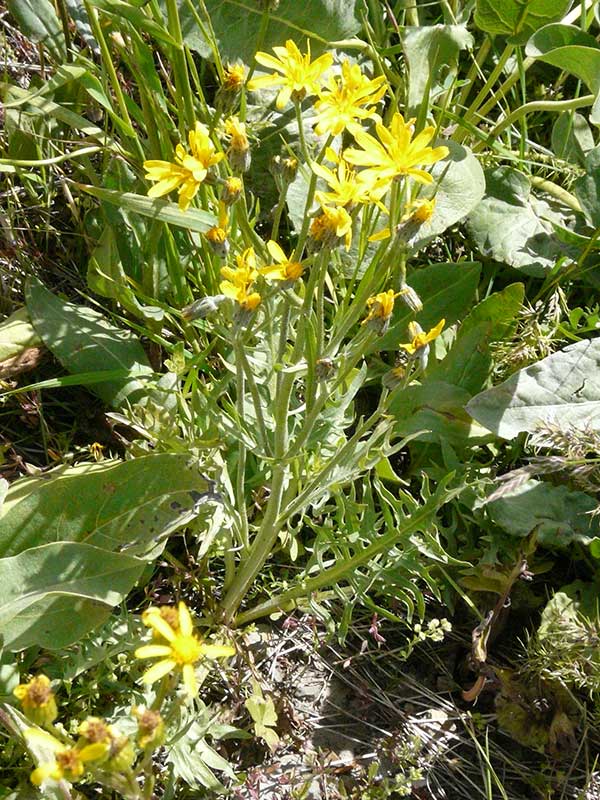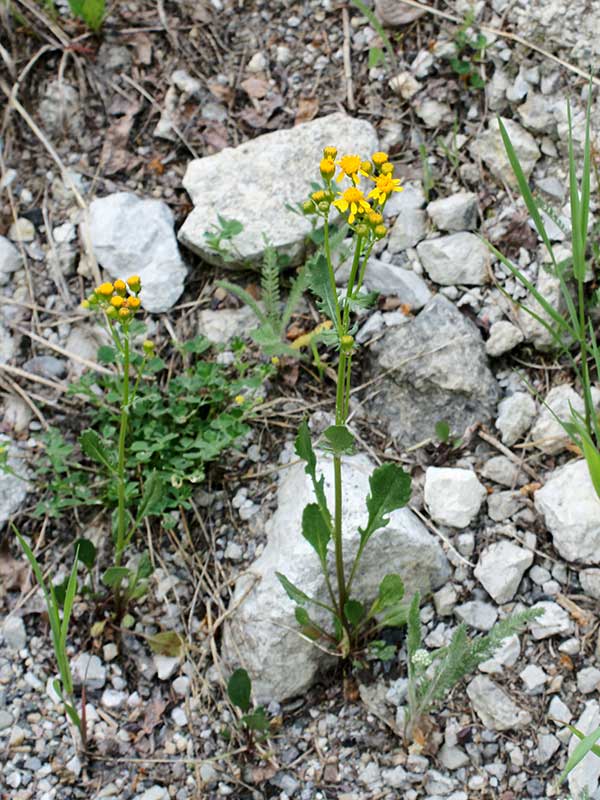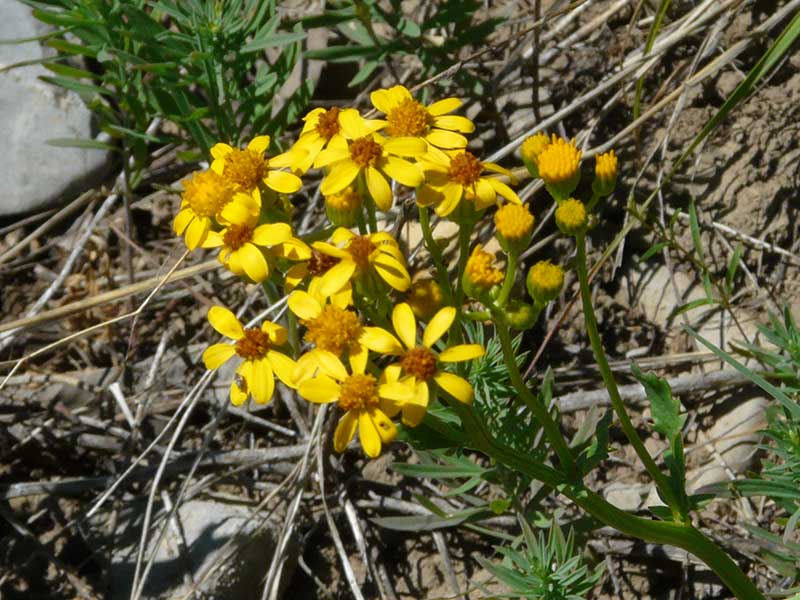Packera multilobata / lobeleaf groundsel
- deeply lobed leaves, mostly at the base of the plant
- bright yellow daisy-like flowers, 10-30 in a cluster per plant
- orange-yellow disk florets
- woodlands, foothills, and generally dry/ sandy/ rocky places.
Also known as: many-lobed groundsel, many-lobed ragwort, Uinta ragwort
Synonym: Senecio multilobatus, Senecio lynceus, Senecio millelobatus,
The leaves of the various Packera species are often the best indicators of the species, and this is especially true in this case. The basal leaves of lobeleaf groundsel are divided into three to ten-ish pairs of lobes, often divided all the way to the midrib so they look like leaflets. This is particularly visible in the main photo in the gallery. Even the smaller apetiolate (stalkless) leaves at the top of the flowering stalks are deeply lobed.
Lobeleaf groundsel is an annual or short-lived perennial herb. One or more stems arise from a taproot and branching caudex, and may be up to 20 inches tall. Because of this growth form, it frequently spreads over wide areas. The sight can be pretty spectacular. At other times, it occurs as scattered bundles of flowering stalks. Also not a bad sight.
The flowers themselves are daisy-like with 8 to 13 yellow rays and a whole lot of yellow-orange disk florets. Sometimes the ray florets might seem to be lacking, but they will eventually appear, developing somewhat later than the disk. The bracts underneath the composite inflorescence – the phyllaries – are green or yellowish.
Beyond the blossoms, which are themselves composite inflorescences, the overall display has from 10 to more than 30 blossoms in an umbel-like array.
Like many other composites, lobeleaf groundsel attracts a number of native bees as pollinators.
This species is usually found in exposed, arid and temperate conditions. It easily tolerates rainfall of from 5 to 20 inches a year. It will easily be seen because of its bright flowers, but look for it in woodlands, foothills, and generally dry and sandy or rocky places.
Interesting bits – The USDA Natural Resources Conservation Center treats this and the Rocky Mountain groundsel (P. streptanthifolia) on the same page, not because they really look alike (the Rocky Mountain groundsel doesn’t have lobed leaves) but because they hybridize freely.
| Color | |
|---|---|
| Family | |
| Blossom size | |
| Inflorescence size | |
| Inflorescence type | |
| When? | |
| Where? |



